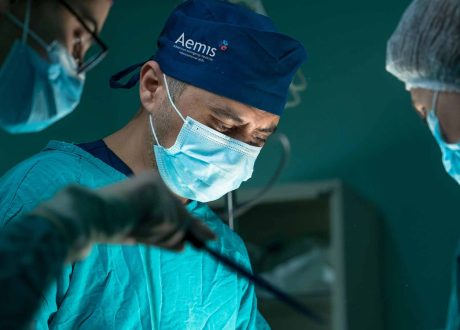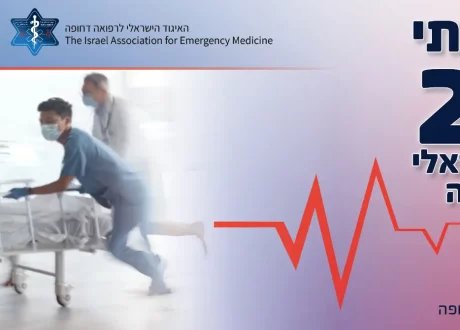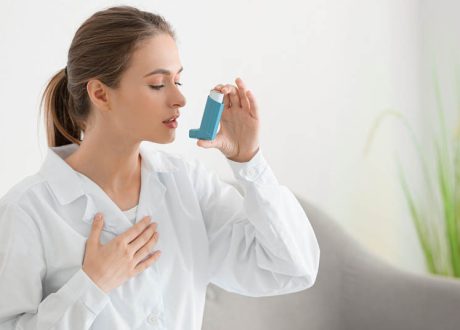 Endotracheal intubation — a potentially lifesaving procedure that is used for the care of many
Endotracheal intubation — a potentially lifesaving procedure that is used for the care of many![]() critically ill patients — demands precision, speed, and skill. It involves the placement of a tube into the trachea to protect the airways while ensuring adequate oxygenation and ventilation for patients who are in respiratory distress or are unable to breathe effectively on their own (or both). Historically, direct laryngoscopy has been the favored technique, in which practitioners use a laryngoscope blade to visualize the larynx directly through the mouth in order to correctly position the endotracheal tube for insertion. Video laryngoscopy has emerged as a promising technique that might improve patient outcomes. The video laryngoscope, which includes a camera affixed to the laryngoscope blade, enables practitioners to observe and guide insertion of the tube indirectly with the use of a digital screen, thereby eliminating the need for direct visualization of the larynx. The clinical benefits of video laryngoscopy as compared with direct laryngoscopy have been unclear because conflicting outcomes have been reported in previous trials.
critically ill patients — demands precision, speed, and skill. It involves the placement of a tube into the trachea to protect the airways while ensuring adequate oxygenation and ventilation for patients who are in respiratory distress or are unable to breathe effectively on their own (or both). Historically, direct laryngoscopy has been the favored technique, in which practitioners use a laryngoscope blade to visualize the larynx directly through the mouth in order to correctly position the endotracheal tube for insertion. Video laryngoscopy has emerged as a promising technique that might improve patient outcomes. The video laryngoscope, which includes a camera affixed to the laryngoscope blade, enables practitioners to observe and guide insertion of the tube indirectly with the use of a digital screen, thereby eliminating the need for direct visualization of the larynx. The clinical benefits of video laryngoscopy as compared with direct laryngoscopy have been unclear because conflicting outcomes have been reported in previous trials.
In an article now published in the Journal, Prekker et al.1 report the results of the Direct versus Video Laryngoscope (DEVICE) trial. A total of 1417 critically ill adults undergoing emergency endotracheal intubation in an intensive care unit (ICU) or emergency department were randomly assigned to undergo intubation with a video laryngoscope or with a direct laryngoscope. The primary outcome was successful intubation on the first attempt. The trial was stopped after the results of the planned interim analysis were found to have met the prespecified criterion for efficacy.
In the final analysis, successful intubation on the first attempt occurred in 85.1% of the patients in the video-laryngoscopy group as compared with 70.8% in the direct-laryngoscopy group, an absolute difference of 14.3 percentage points (95% confidence interval, 9.9 to 18.7). The secondary outcome was the occurrence of severe complications during intubation (which were defined as severe hypoxemia, severe hypotension, new or increased vasopressor use, cardiac arrest, or death). Severe complications occurred in 21.4% of the patients in the video-laryngoscopy group and in 20.9% of those in the direct-laryngoscopy group. Safety outcomes, including esophageal intubation, injury to the teeth, and aspiration, were also similar in the two groups. Although successful intubation on the first attempt is a surrogate outcome for clinical events, failure to achieve this result is associated with severe, life-threatening events.2 As such, the primary outcome is both sound and clinically justified.
A key factor contributing to the clear difference in efficacy between the use of video laryngoscopy and the use of direct laryngoscopy that was observed in this trial but was not observed in previous trials is the level of experience of the clinicians (operators) performing the intubations. A large trial conducted in France before 2016 in which 371 patients underwent intubation with video laryngoscopy or with direct laryngoscopy showed no significant difference in efficacy between the two groups; however, the level of training of the operators who performed video laryngoscopy was not reported.3 A study conducted in 2019 in 180 ICUs in France showed that video laryngoscopy was used often or routinely in only 16% of the ICUs.4 Since then, the ubiquity of video laryngoscopy has increased, driven in part by recommendations for airway management during the coronavirus disease 2019 pandemic.5
In the DEVICE trial, 36% of the intubations were performed by operators who had used a video laryngoscope in more than 75% of previous intubations, and 58% were performed by operators who had previously used this device in 25 to 75% of previous intubations. Only 6% of the intubations were performed by operators who had used a video laryngoscope in less than 25% of previous intubations. There may be several reasons for this high level of previous experience, but given that nearly 92% of the operators in the trial were residents or fellows in ICUs or emergency departments, it is likely that the training programs in these settings placed substantial focus on the use of video laryngoscopy over direct laryngoscopy. Additional reasons may include market penetration and the increasingly ubiquitous clinical use of video laryngoscopy. Therefore, an alternative conclusion could be drawn from this trial: to achieve improved success on the first attempt at intubation with video laryngoscopy, operators must be adequately trained in the use of video laryngoscopy.
The trial was well conducted, with adherence to best practice in trial methods; therefore, the results are internally valid. However, the results might not be generalizable to institutions with different training programs involving video laryngoscopy. Furthermore, intubations performed in operating rooms were not evaluated in the trial, and the intubations performed during the trial were not performed by a substantial number of anesthesiologists; consequently, the results cannot be generalized to these settings or operators. Finally, a stylet or bougie was used in all the intubations; thus, we do not know whether the results would be similar without their use.
Evidence for adopting a change is not the same as its successful implementation.6 Evidence to support the use of ultrasonographically guided central venous catheter placement has existed for more than 20 years, yet its adoption took 15 years and is still not universal.7,8 There are many barriers to the implementation of new clinical interventions, including beliefs regarding the efficacy of the intervention, individual training, and the availability of equipment. Successful implementation involves a behavioral approach that takes into account clinician and patient factors.9 The results of this trial are compelling and support the systematic use of video laryngoscopy in combination with appropriate training and systematic use of bougies or stylets.
Disclosure forms provided by the authors are available with the full text of this editorial at NEJM.org.
This editorial was published on June 16, 2023, at NEJM.org.
Author Affiliations
From Sorbonne Université, Improving Emergency Care University Hospital Federation, INSERM Unité Mixte de Recherche 1166, Foundation for Innovation in Cardiometabolism and Nutrition, University Hospital Institutes, and the Emergency Department, Hôpital Pitié–Salpêtrière, Assistance Publique–Hôpitaux de Paris — both in Paris (Y.F.), and the Emergency Department, Royal London Hospital, and the Blizard Institute, Queen Mary University of London — both in London (B.B).










